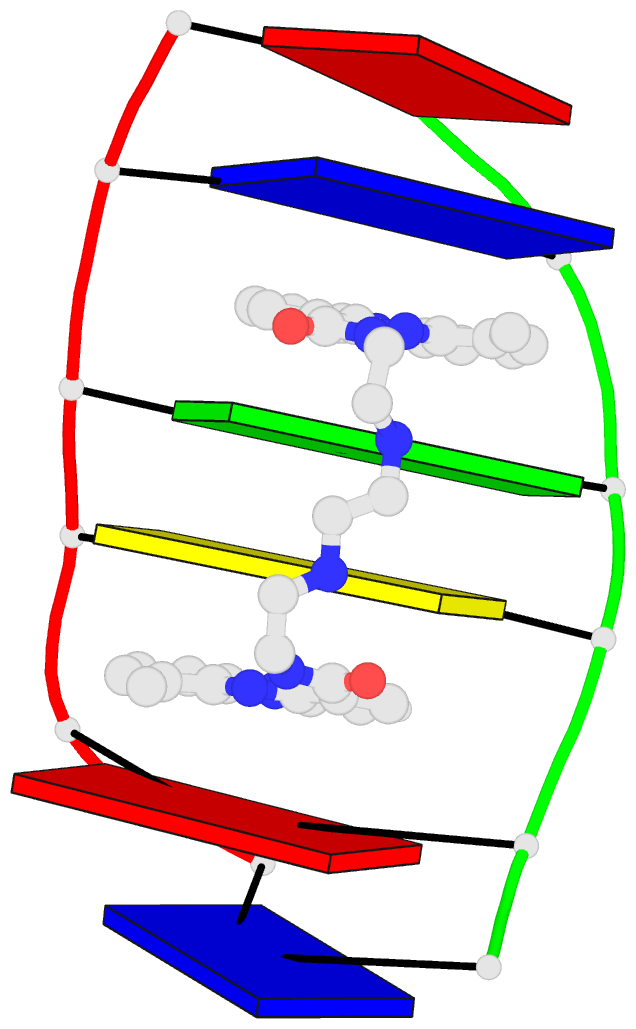Summary information and primary citation
- PDB-id
-
4bzt;
SNAP-derived features in text and
JSON formats
- Class
- DNA
- Method
- NMR
- Summary
- The solution structure of the mln 944-d(atgcat)2
complex
- Reference
-
Serobian A, Thomas DS, Ball GE, Denny WA, Wakelin LPG
(2014): "The
Solution Structure of Bis(Phenazine-1-Carboxamide)-DNA
Complexes: Mln 944 Binding Corrected and Extended."
Biopolymers, 101, 1099. doi:
10.1002/BIP.22513.
- Abstract
- MLN 944 is a bisintercalating DNA-binding antitumor
agent known to be a template inhibitor of transcription.
Previous (1) H NMR studies of its d(ATGCAT)2 complex
concluded that its phenazine chromophores are protonated.
However, we find that this is not so, which has important
consequences for the charged state of the ligand, for the
orientation of its 1-carboxamide group in the complex, and
for the details of the interaction of its protonated
interchromophore linker with the DNA base pairs. Here, we
report a corrected solution structure of the MLN
944-d(ATGCAT)2 complex, and extend the study to complexes
with d(TATGCATA)2 , and d(TACGCGTA)2 , using a variety of
(1) H and (31) P NMR methods and molecular dynamics
simulations employing the AMBER 12 force field. We find
that for all three complexes MLN 944 binds as a dication,
in which the chromophores are uncharged, in the DNA major
groove spanning the central 2 GC base pairs in a manner
that maintains the dyad symmetry of the DNA. The
carboxamide group lies in the plane of the chromophore, its
NH making hydrogen bonding interactions with the phenazine
N10 nitrogen, and the protonated linkers form hydrogen
bonds with the O6 atom of guanine. The dynamics simulations
reveal extensive solvent interactions involving the linker
amines, the carboxamide group, and the DNA bases.





